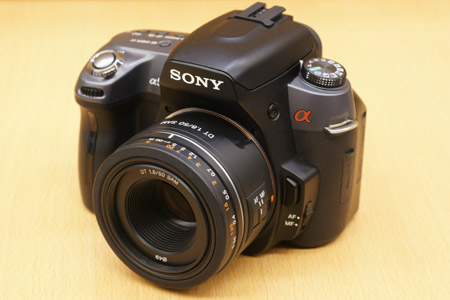Most of you may wonder what I meant by ‘Nifty Fifty’, right?
Nope, it’s not the best RM50 I’ve ever made in my entire working life, nor a creaseless RM50 note so sharp it may induce cuts to your skin ~ pretty much a banker’s tale.
But this nifty fifty costs me RM599 ~ and I am happy to add it to my arsenal of lenses. Yes. My new addition to the collection of lenses I own now. Here’s a bit about the ‘Nifty Fifty’
In today’s digital world, technology has made everything easier to reach, with many devices working as more than one device, and universal remotes to control them. The simple purpose – convenience. And that is what happened with the advent of zoom lenses. In today’s date, with high zoom compacts flooding the market, and manufacturers making lenses that zoom in far enough to bring a bird sitting 50 feet away seem as if it is sitting in front of your lens, a lot of us are so used to zoom lenses that we simply cannot imagine having a lens without a zoom, however much it may be.
But, it is for a fact that the best optical quality is delivered by prime lenses (fixed focal length, no zoom lenses). Why? In simple words, because they use a smaller number of glass elements inside the lens, which means lesser loss of quality, and hence better pictures.
Anyways, this post is not to highlight the advantages of primes over zooms, but to highlight one particular prime lens that I feel is a must use for everyone with an SLR, at least for some time. I am talking about the 50mm prime lens – or the nifty fifty as it is rightly called. At this focal length, these lenses show the same view that you see through your eyes, and so are also referred to as normal lenses.
The 50mm f/1.8 is the least expensive lens at this focal range. And this, dear readers, is a marvel. I’ll keep it very simple… why the 50mm is a must:
- At under $100 starting, it is very very cheap, and an easy buy for the hobbyist with a budget.
- Don’t let the price fool you. The optical quality of even the cheapest 50mm is amazing to say the least, owing to its rather simple design. Much better than many expensive zooms even, this lens is loved mostly for its sharpness and bokeh.
- The nifty fifty is light, small and so very convenient to carry around, whether in your bag, or on your camera.
- Primes in general, and the 50mm especially, are fast lenses i.e. they have bigger apertures that allow you to shoot at high shutter speeds even in low light – one major aspect where most zooms lack. The fastest telephoto I’ve heard of has a max aperture of f/2.8, and the fastest prime I’ve heard of is a 50mm f/0.95!
- Perhaps the most important attribute of all primes, after their optics, is the learning they offer. With a fixed frame of view, the only zoom you have at your disposal is your feet. With this ‘restriction’ one ends up being very careful, and also very creative, with their compositions, and also more involved in the whole photographic process. With time you’ll find that even with zooms, you’ll end up getting more ‘keepers’ because of this. In essence, primes are great exercise for your composition muscles.
- Shooting in low light: As mentioned above, the wide aperture lets in more light, allowing you to shoot without flash in low light. This lens is great for shooting indoors where a flash sort of ruins the feel. Of course the wide aperture also means that you’ll have a very shallow depth of field, and hence you need to compose your shot such that you get the subject completely in focus.
- The Reversed Macro: Not all of us can afford a dedicated macro lens. And the good news is that you can use this 50mm as a macro lens by reversing it. You’ll need a reversal ring for that. You lose autofocus, but that’s not all that bad when you’re getting a macro lens at this price. For more on reversing the 50mm for macro, check out this post on DPS.
- The Wide effect: If you don’t have a dedicated wide angle lens, don’t fret. You might not get as wide an angle as with a dedicated lens, but you can still get a wide angle look by moving farther from your subject, and using a smaller aperture (larger f number). This covers a wider area and gives a larger zone of sharpness, just like a wide angle lens.
- The Telephoto effect: Just like above, you can also simulate a telephoto effect by getting close to your subject and opening up the aperture. This gives a nicely blurred background which is a characteristic of telephotos.
- Candid Camera: The fact that this lens offers a field of view just like that of the human eye* i.e. you get what you see, plus the lens’s small size make it a great lens for getting candid shots without getting noticed. In fact, since it sees what you see, you can even shoot without using the viewfinder. Simply point your camera in the direction you’re looking, and click!
- DOF: The large aperture offers extremely shallow depth of field which is another creativity stimulator. One can get some very nice looking photos with imaginative use of the shallow DOF.
- Portraits and Streets: This lens is by far most used for portraiture and street photography and gives some great results in both fields.
Last but not the least, we bust the myth that the 50 mil is used only for portraits and street photography. Mentioned below are some points that show just how versatile this little wonder is:

Nifty, Right? ^^


0 comments:
Post a Comment